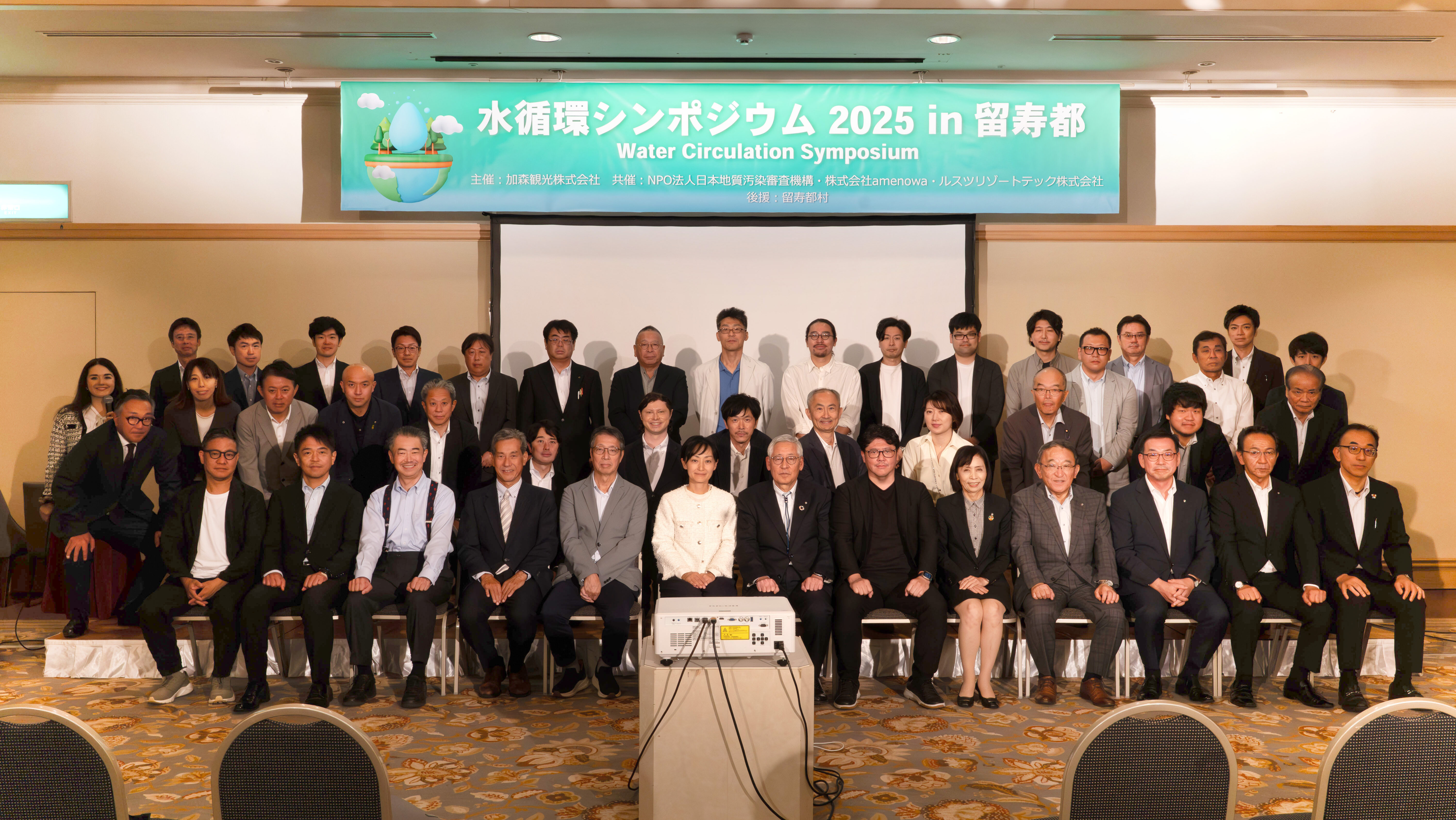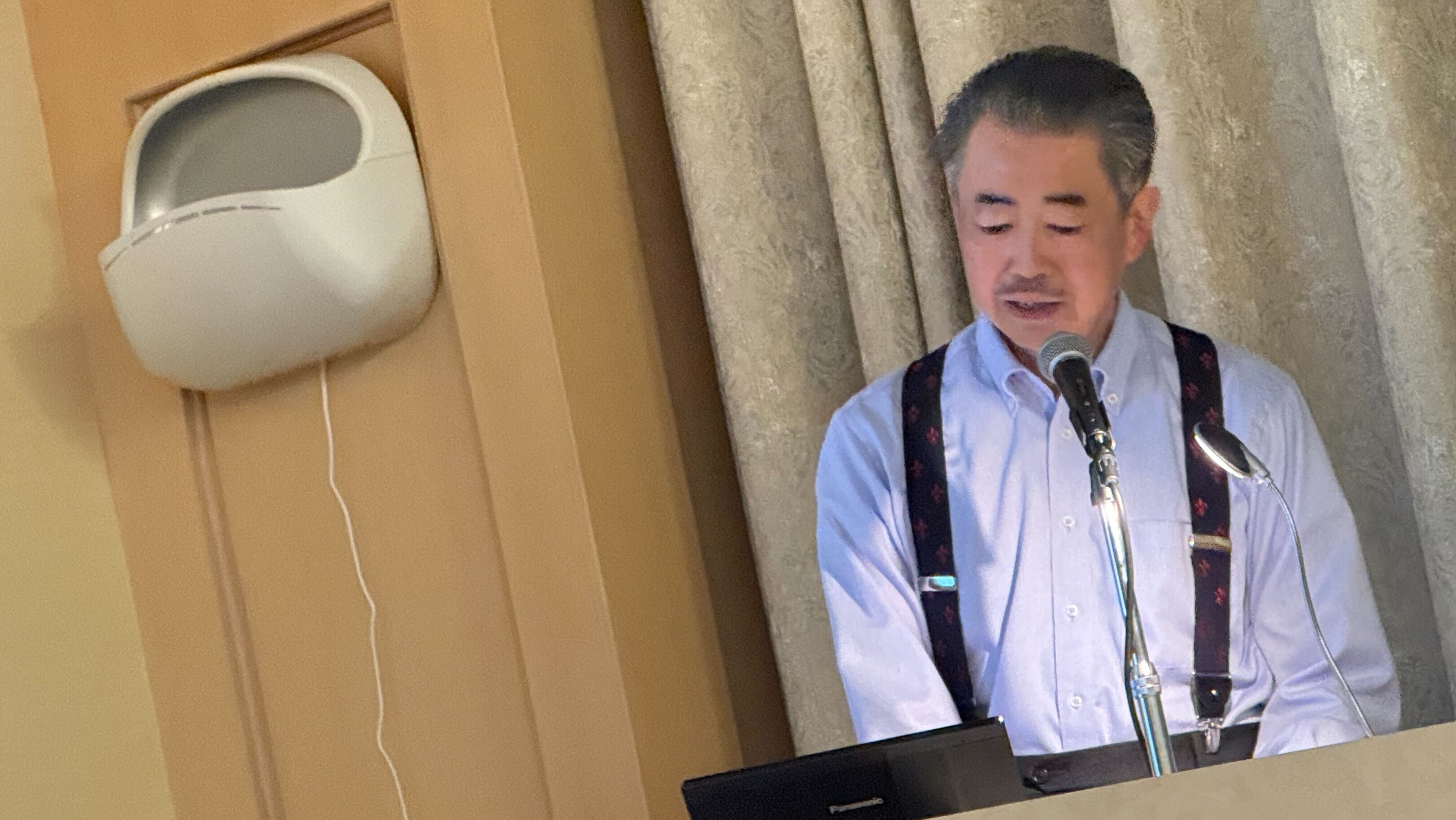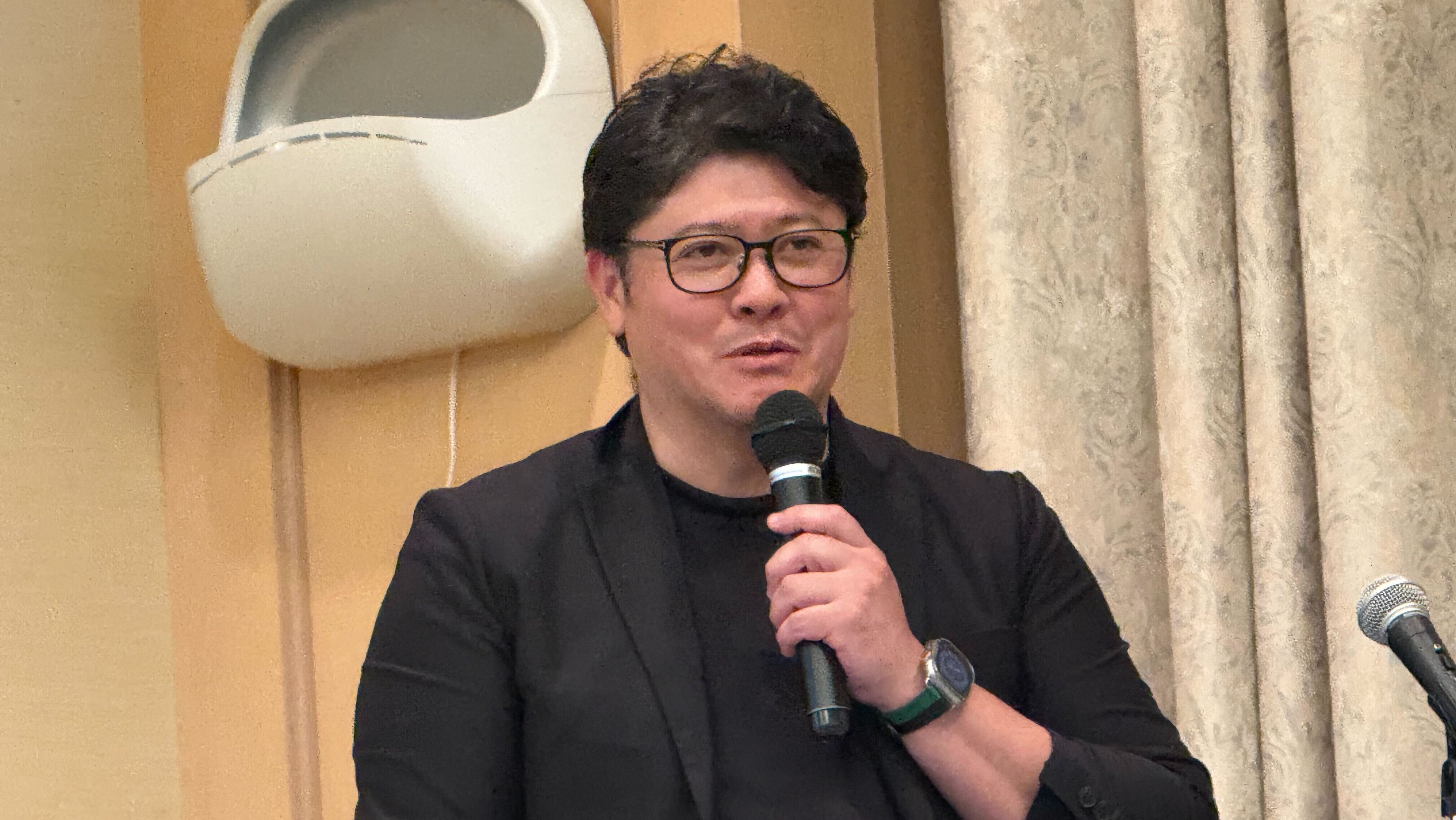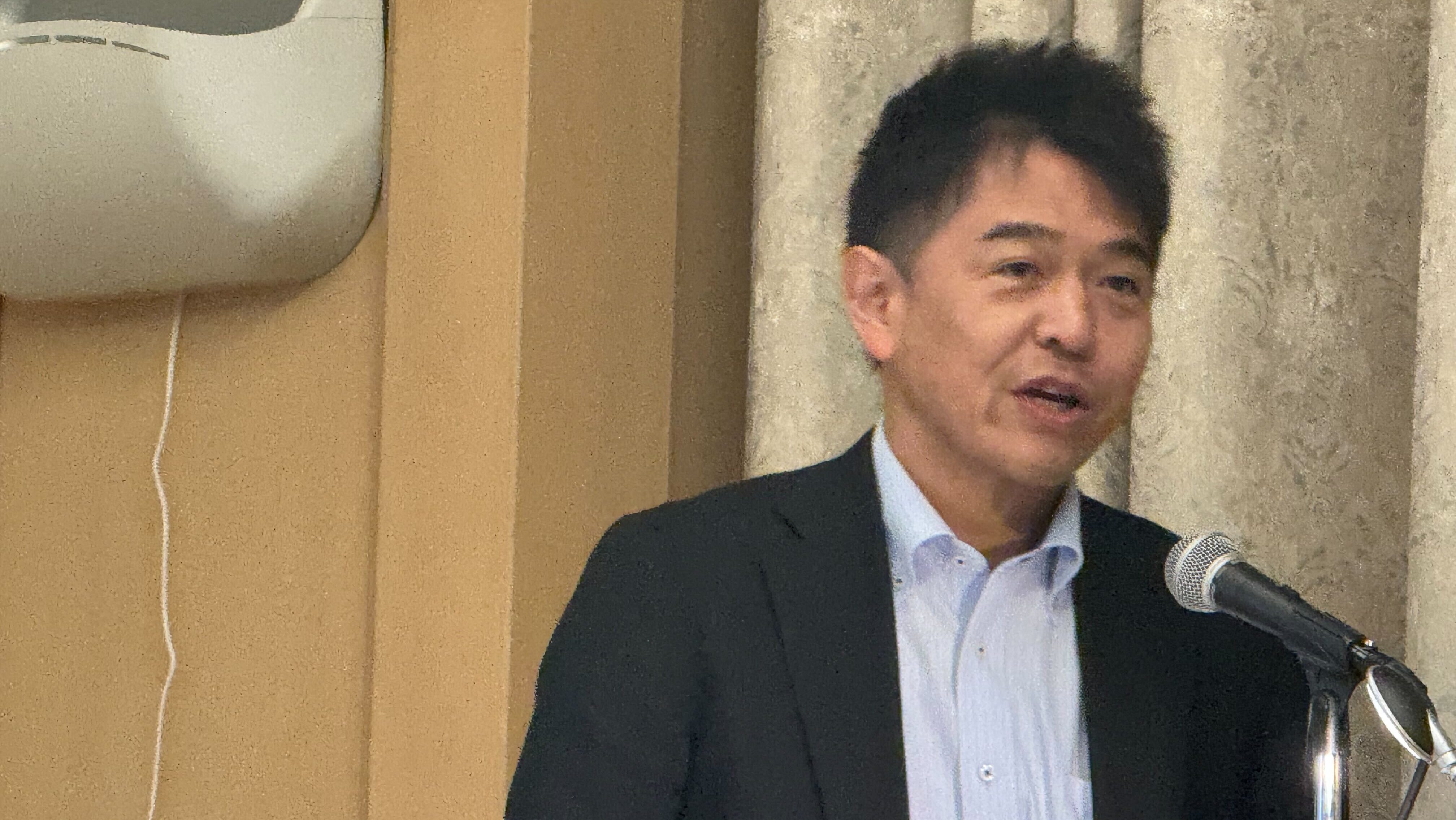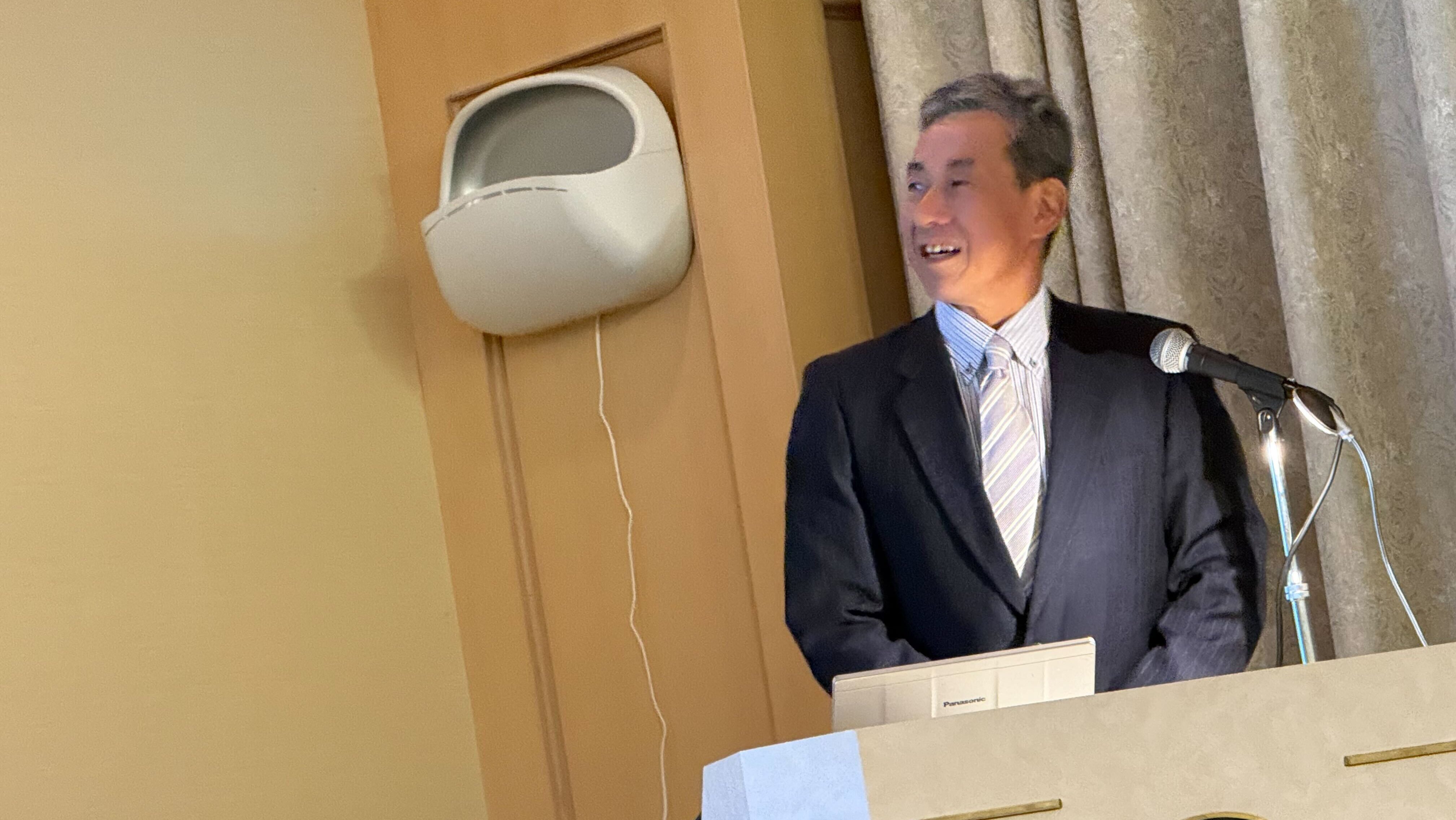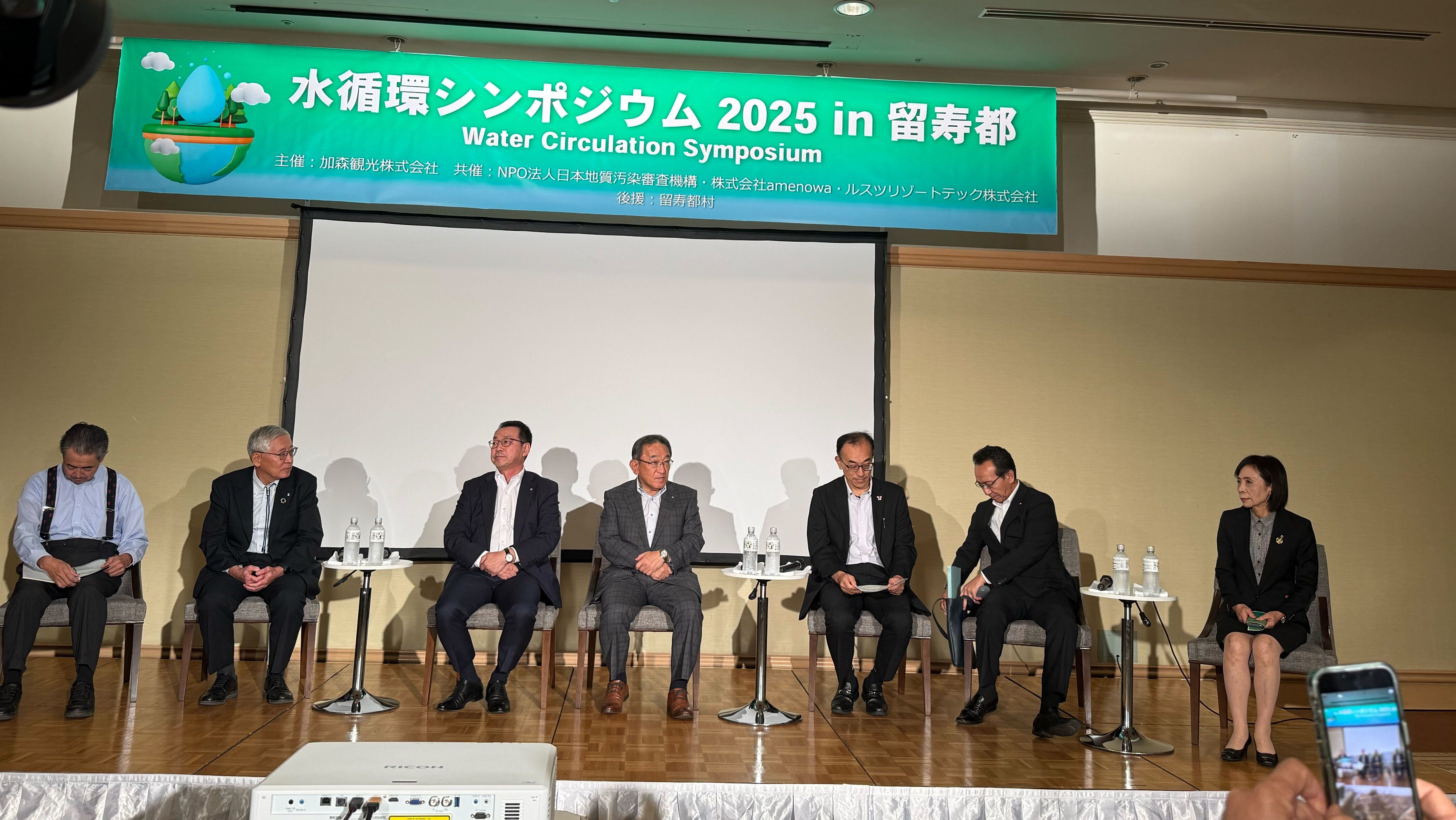Thoughts After Listening to Professor Shimatani
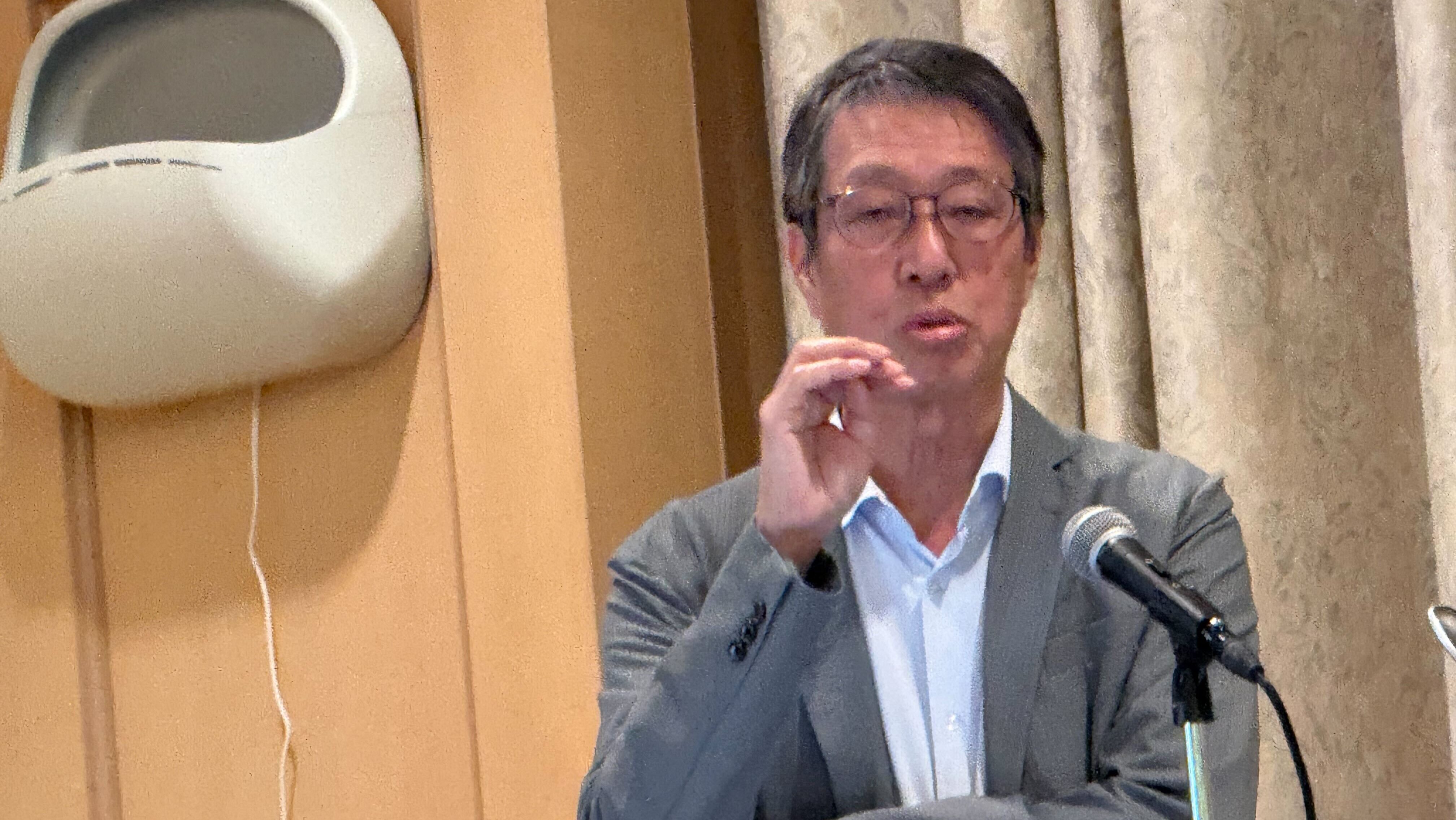
— A system that stores water, lets it soak in, and allows it to flow slowly
What I Thought After Listening to Professor Shimatani
One of the most striking talks at this symposium was by Professor Shimatani of Kumamoto Prefectural University.
Using the example of the large-scale flooding in Kumamoto, he explained—clearly and accessibly—that it’s vital to slow water not only in the river but across the entire landscape.
His words moved me deeply: this is not only about disaster prevention; it also connects to the environment and the future of our communities.
What is “green infrastructure”?
Professor Shimatani introduced the idea of green infrastructure—approaches that harness nature’s own power to reduce flood risk.
- Rain gardens (ameniwa): hold rainwater in flowerbeds or yards and let it infiltrate into the soil
- Paddy-field dams: temporarily retain rain in rice paddies and release it gradually
- Leaky dams: arrange logs or similar materials in streams to ease the force of water
These measures not only reduce flooding; they also recharge groundwater and protect habitats for living creatures.
What the numbers about rain and water tell us
What the numbers about rain and water tell us
Professor Shimatani explained that during heavy rainfall in the Kuma River basin (Kumamoto), roughly 800 million tons of water fell across the watershed.
Of that total, about 50% was retained by forests and farmland.
By contrast, in Suginami Ward, Tokyo, the capacity to retain rainwater is only about 15%—a figure that highlights just how powerful natural systems can be.
What’s more, at Kumamoto Prefectural University’s rain garden, about 93% of rainfall infiltrated into the ground over a period of one and a half years, and overflow to the river occurred in only 6 out of 100 rain events.
From these results, we can learn that making good use of rainwater helps reduce floods while increasing groundwater.
A mechanism everyone can take part in
A distinctive feature of this project is that it involves not only universities and public agencies but also banks:
- Preferential loan interest rates for households and companies that build rain gardens
- Creating sustainability time deposits, with funds donated to rain-garden activities
- Branch managers introducing rain-garden initiatives to local residents
With the power of finance added, point efforts can scale up to the community level.
How agreements knit wider connections
What began in Kumamoto is already spreading across Japan—to Okinawa, the Shimanto River basin, and beyond.
Through local agreements, regions commit to continuing the work by combining technology, funding, and people.
Hearing this, I felt it would be wonderful if Rusutsu and the municipalities around Mt. Yōtei joined these agreements too.
To protect Hokkaidō’s nature and water, community-wide ties will surely become a great strength.
In summary
- Store rain, let it infiltrate, and release it slowly
- Combine nature, people, and financial mechanisms to act as a whole community
- As the numbers show, nature’s power is great—protecting both disaster resilience and the environment
From Professor Shimatani’s talk, I learned that how we handle water can reshape the future of our communities.
I hope we can expand these efforts to our own towns in the days to come.

